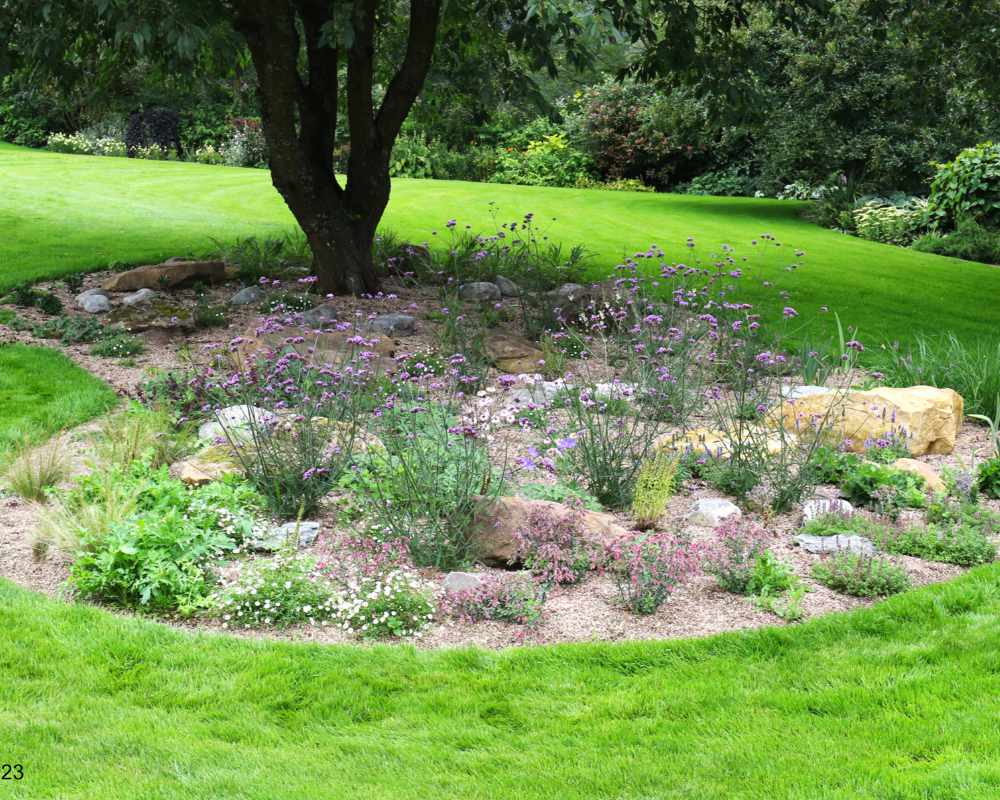Creation of a dry garden was the title of a presentation to our Monday meeting, by our Chair, Flo Hadley. The mature cherry tree in Flo’s garden, together with a few drought years, had produced an area of poor, barren ground, and felling the tree was not an option. A local garden designer was commissioned to design a suitable garden for the area. The design and feasibility survey produced also included a planting layout and plant lists. Each stage was photographed and logged. This article will take us through the stages.
A dry garden is never watered, never fertilized, and uses drought-tolerant small plants, topped with a gravel mulch. The conditions of this site of thin, poor soil over stones and rubble, were therefore ideal for this style of garden.
The initial discussions between the clients and the designer formed a large part of the plan – colour, shapes, preferences and positive dislikes – as well as how the new garden would fit into its existing surroundings. These were all criteria which formed the large part of the design. The chosen outline was a figure of eight approximately 11metres by 8 metres at the widest points.
The project commenced in March with Compact Contracting applying a systemic weed killer to the grass area, which would create a residual decaying layer to provide nutrients to the planting to come. The 1st April saw the spread of 2.5cm of neutral pH low fertilizer top soil. Next came the rocks – large from the local Farlow Farm Nursery, the medium rocks purchased from neighbours, and the small ones came from the back of the shed, collected over the years (we all have such a collection though generally not that useful!). This ensured that all the rocks were local and matched, and fitted in well. And, finally, two tonnes of top soil were added.
The plant list was based on the clients’ chosen colour palette of purple, blue and silver, and was organised into one- third evergreen for seedheads and winter interest, one-third flowering, and the remainder herbaceous, creeping and spreading. They were all planted in triangles of threes, fives and sevens, with space around each triangle, and then topped with weed-suppressing gravel, stones or slate, applied about one-inch thick to allow land drainage, self-seeding and plant spread.
The future involved the planting of hundreds of bulbs. The ongoing maintenance of the first and second years will involve weeding and some watering if necessary. Then comes the opportunity to stand back and enjoy the development of the dry garden.

